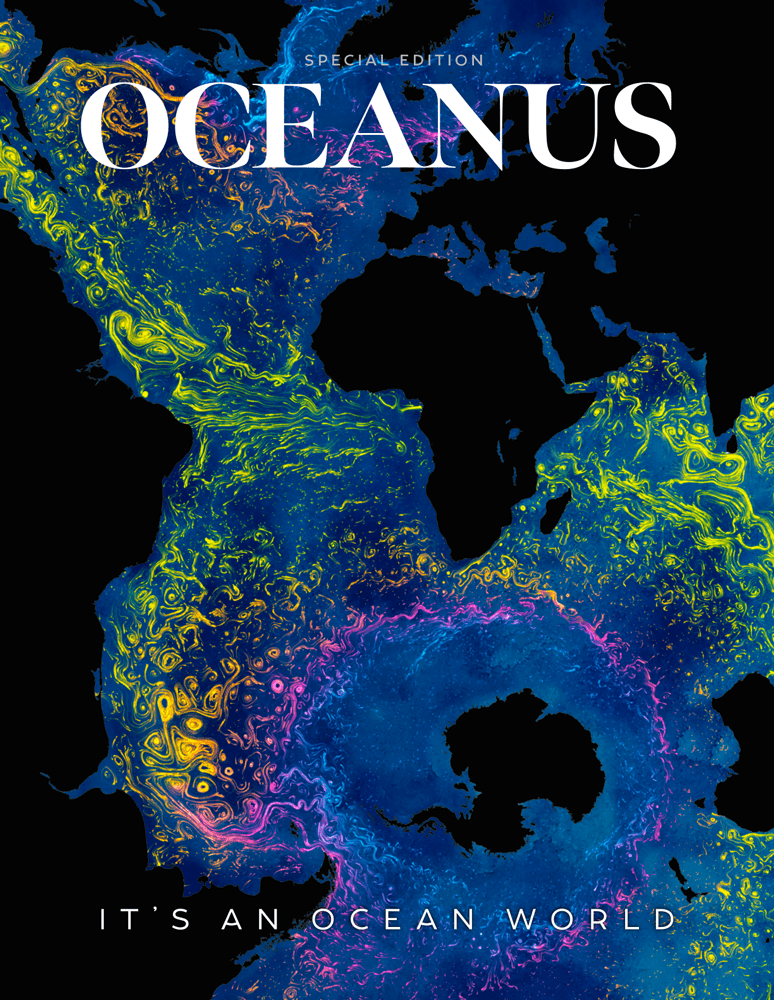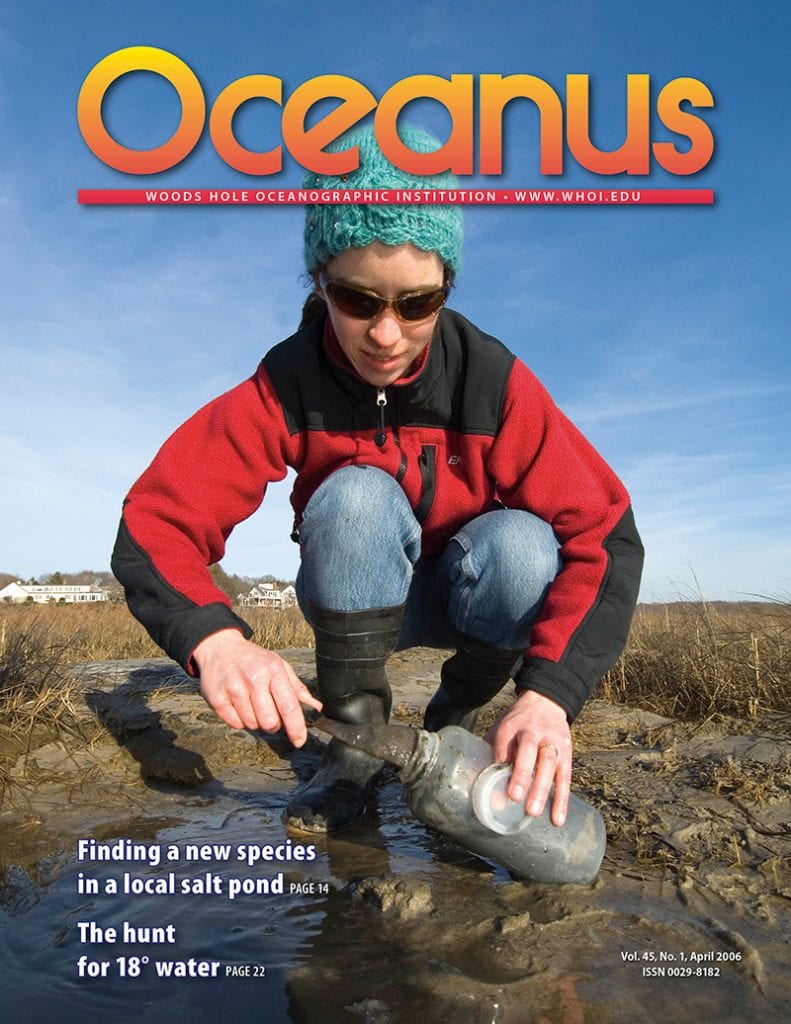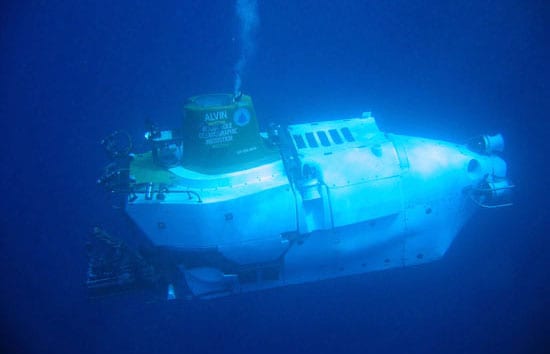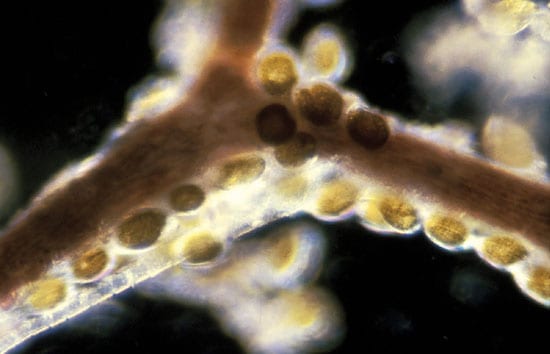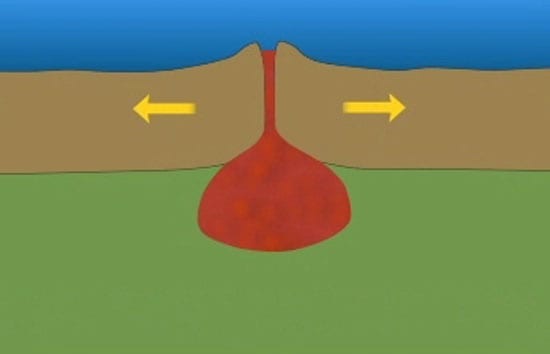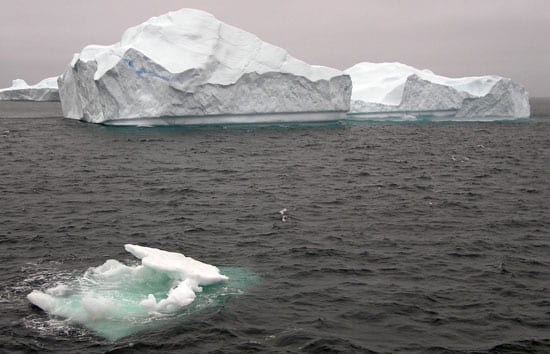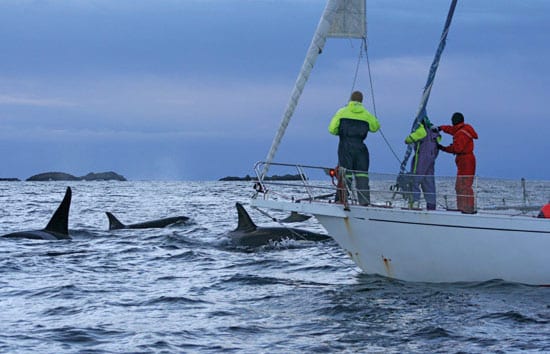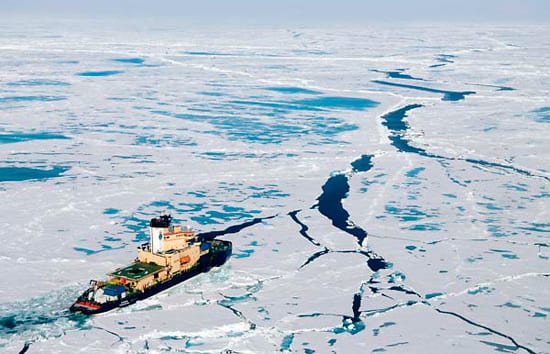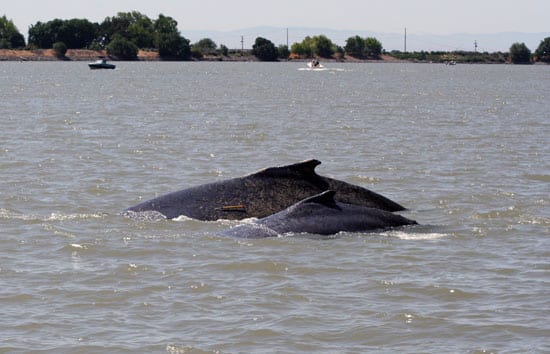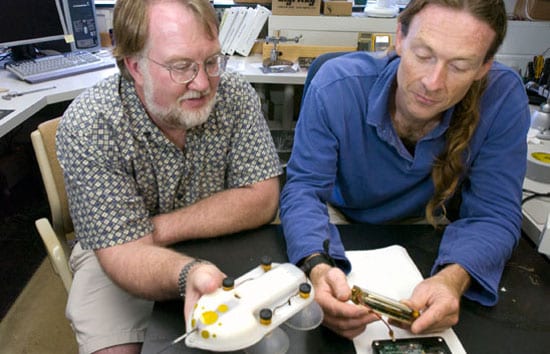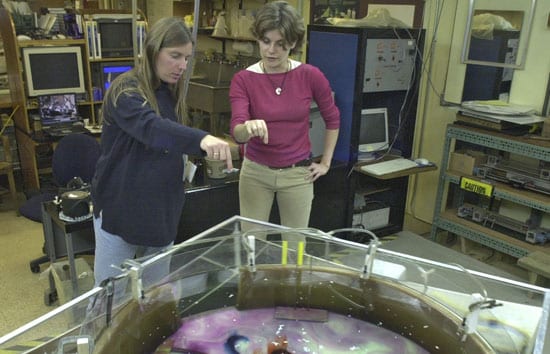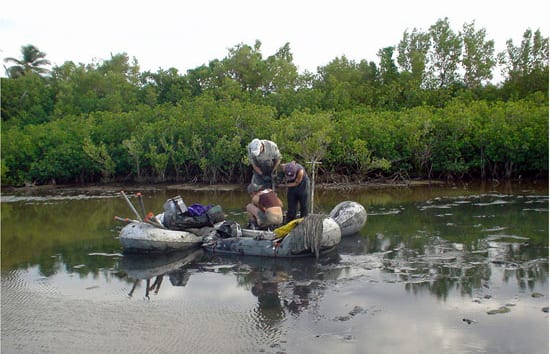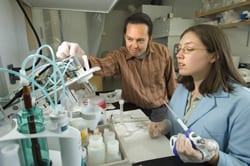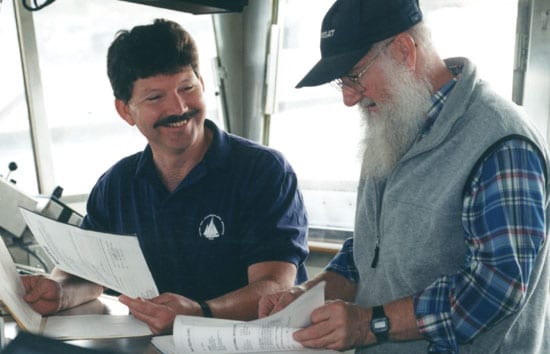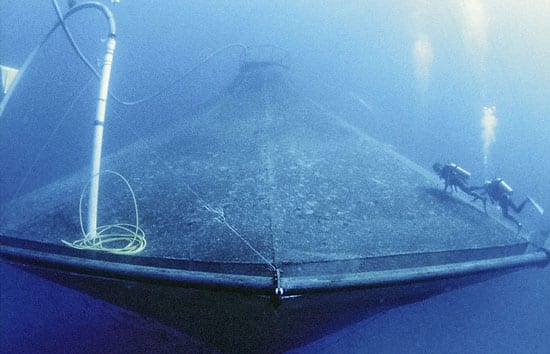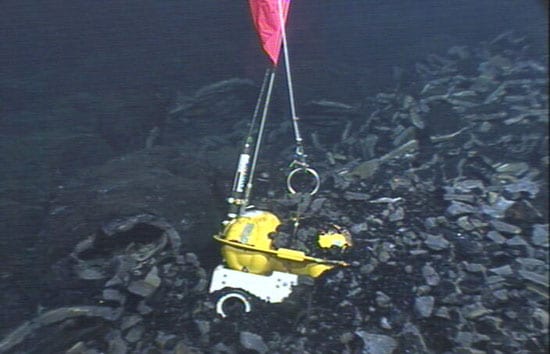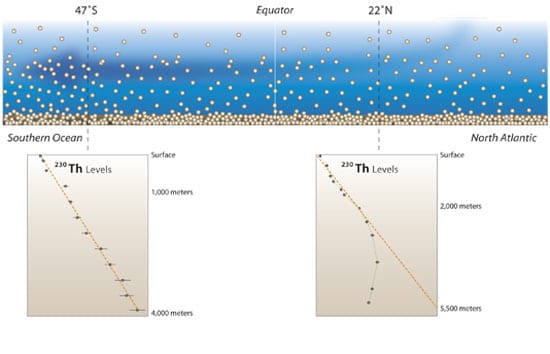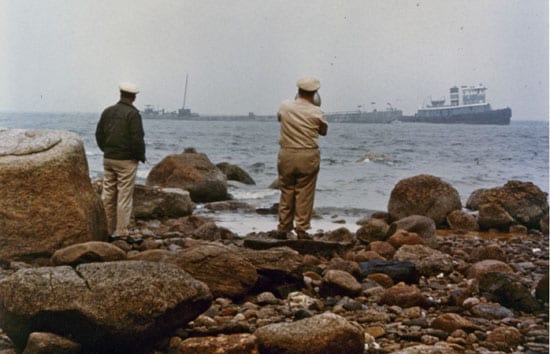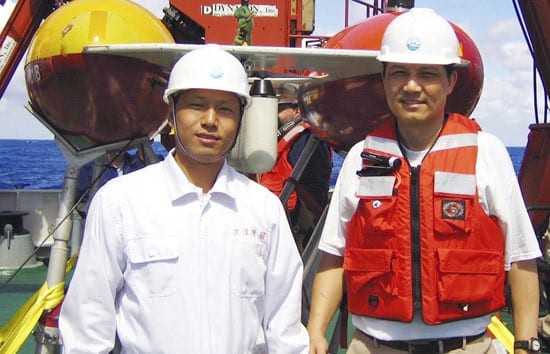Oceanus Online Archive
Old Whale Oil Tells Tale of New Pollution
It was the scientific equivalent of finding fine wine in an old cask. Analyzing whale oil from the whaling ship Charles W. Morgan’s last voyage, in 1921, marine chemists at…
Read MoreWHOI Scientists Testify to Congress
Marine geochemist Scott Doney and marine policy specialist Porter Hoagland traveled to the nation’s capital this spring to inform Congress about critical ocean issues: the effects of climate change and…
Read MorePhone Call Links Inner and Outer Space
Tim Shank and Sunita Williams placed one of the most unusual long-distance phone calls of all time on Jan. 26, 2007. It traveled over a few time zones and through…
Read MoreA Warm Eddy Swirling in the Cold Labrador Sea
Amy Bower is traveling to the Labrador Sea to install a mooring with novel carousels that will autonomously release profiling floats into passing warm eddies. She has also forged an innovative outreach partnership with the Perkins School for the Blind, including an expedition Web sight for students with visual impairments.
Read MorePilot Study Examines Ciguatera Fish Poisoning
It is one of the most common illnesses from eating seafood, sickening more than 50,000 people a year, and it is on the rise around the world. Yet most people…
Read MoreNew Wrinkles in the Fabric of the Seafloor
Deborah Smith first heard the strange rumbling from the seafloor in 2001 and was eager to get to the bottom of it. The ocean commotion was detected by underwater hydrophones…
Read MoreInterrogating the ‘Great Ocean Conveyor’
The Greenland-Scotland Ridge looms like a great undersea barrier, stretching from East Greenland to Iceland and the Faroe Islands, and across to Scotland. There are a few gaps in the…
Read MoreEavesdropping on Whales’ Mealtime Conversation
Like a knife slicing through denim, the black dorsal fin broke the surface of the icy water quickly, and then disappeared into the depths. “Off the port bow,” yelled Ari…
Read MoreSummer Under Arctic Ice
This month, an international team of scientists and engineers are exploring the seafloor of the Arctic Ocean while cruising aboard the Swedish icebreaker Oden. The science team is sending three…
Read MoreFollowing Whales Up a Creek
Michael Moore is accustomed to working solo (or nearly so) in remote places, but this was a very public endeavor. The WHOI marine mammal biologist and veterinarian flew across the…
Read MoreThe Deepest Divers
For years, sperm whales and elephant seals were thought to hold world records for holding their breath under water. But those animals have nothing on beaked whales. Using digital tags…
Read MoreThe Ocean—Captured in a Box
Claudia Cenedese prides herself on thinking inside the box. Her boxes are made of Plexiglass, and they contain the oceans—but on a miniature scale. Most oceanographers make tiny observations in…
Read MoreWhat Does It Take To Break a Whale?
The ship hit the whale with a force that snapped her 14-foot jawbone like a toothpick and left a 4-foot-long crack in her skull. Known as 2150 among scientists, she…
Read MoreScientists Unearth Long Record of Past Hurricanes
Reaching down into the muck below a lagoon off Puerto Rico, two geologists at Woods Hole Oceanographic Institution reached back 5,000 years to compile the longest record of strong hurricanes…
Read MoreGrowing Marine Plants Need Their Vitamins
Your mother was right: You need your vitamins. And that turns out to be true for life in the oceans, too. B12—an essential vitamin for land-dwelling animals, including humans—also plays…
Read MoreOf Sons and Ships and Science Cruises
Woods Hole Oceanographic Institution (WHOI) has had an unbroken line of three ships named Atlantis that date to the Institution’s founding in the early 1930s. Arthur D. Colburn III, better…
Read MoreNew Regulations Proposed for Offshore Fish Farms
Newly proposed legislation to regulate large-scale fish farming in the oceans around the United States incorporates major recommendations from a blue-ribbon task force organized by the Woods Hole Oceanographic Institution…
Read MoreRescue Mission on the Seafloor
The two earthquake-monitoring instruments—each the size and weight of a small refrigerator—were glued to the ocean bottom by erupting lava that had flowed and hardened around them. If scientists could…
Read MoreDeep Ocean Waters Don’t Run Still
The ocean’s circulation is thought to play an important role in our climate by transporting heat from tropical regions toward Earth’s poles. Of particular interest is the circulation in the…
Read MoreStill Toxic After All These Years
This is a story about persistence—of oil, and of people. It began in 1969 when the barge Florida ran aground off Cape Cod, spilling 189,000 gallons of fuel. But it…
Read MoreThe Lo-o-o-ng Core
Since the early part of the 20th century, scientists have been going to sea on ships equipped with long, hollow pipes called corers. These corers are used to collect seafloor…
Read MoreA Ridge Too Slow?
Ever since scientists first discovered vents gushing hot, mineral-rich fluids from the seafloor in the Pacific Ocean 30 years ago, they have found them in various places along the Mid-Ocean…
Read More